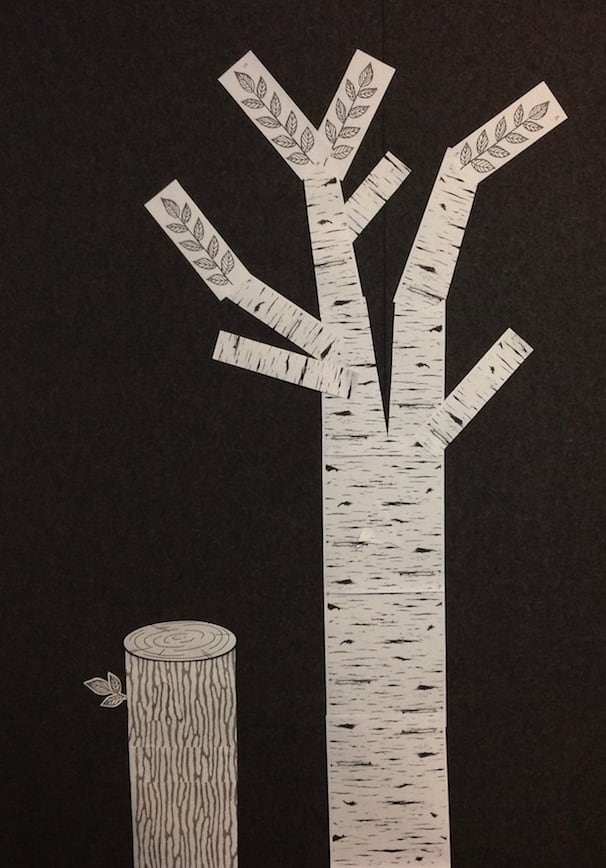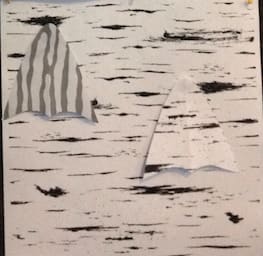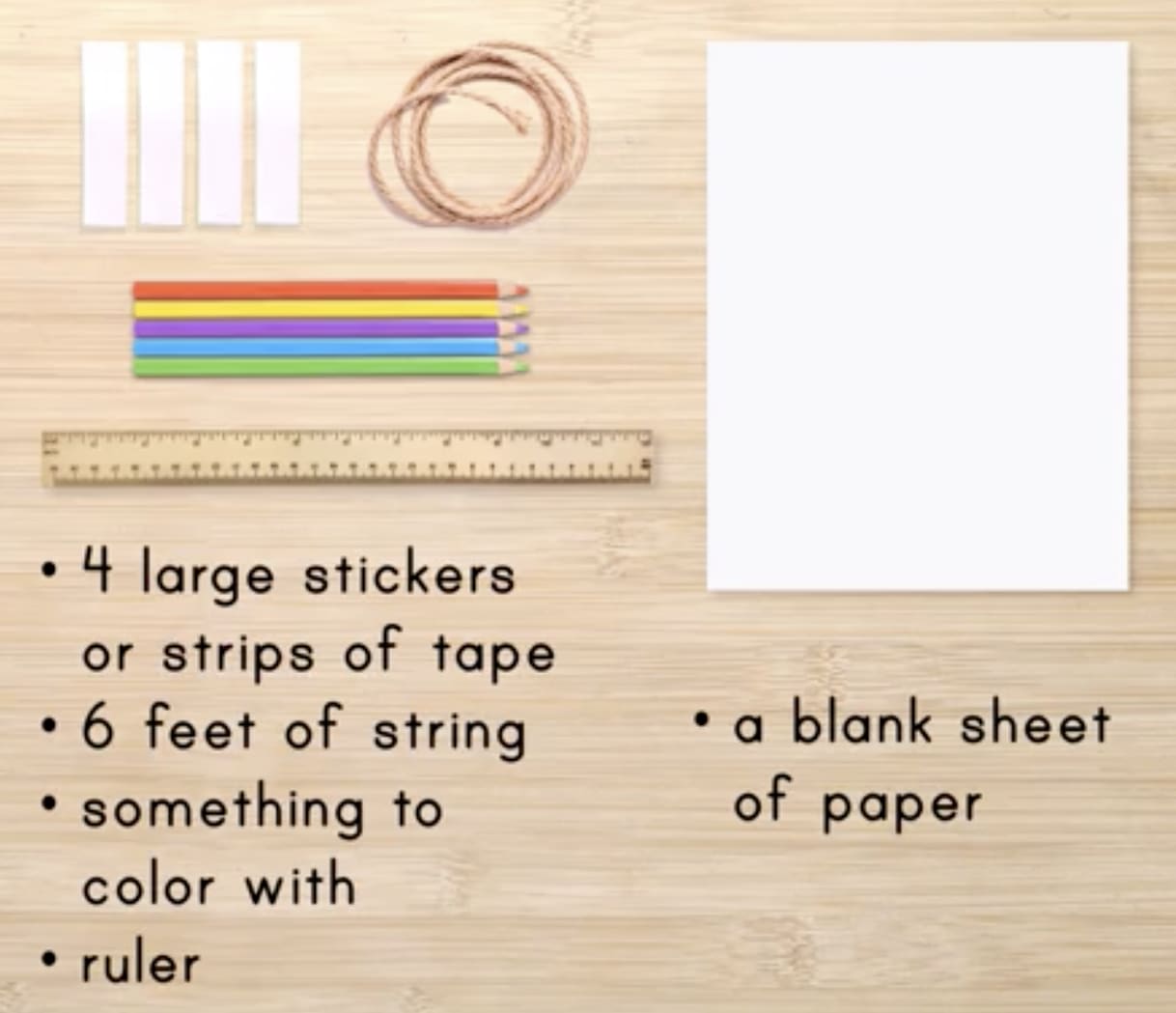We suggest students work in groups of four. Homeschool students can work on their own.
This activity works best on a low pile carpet. If your classroom has a smooth floor (such as linoleum), you’ll need a bath towel to serve as the work area for each group of 4 students.
Make “Beaks”
Each student will need a “pointy beak” and a “duck beak” to experiment with.
Here’s how to make a “pointy beak”:
- Fold a straw in half.
- Make sure that the ends of the straws are even. (If they aren’t, trim them with scissors.)
- Store your “beaks” in a cup so they stay folded.
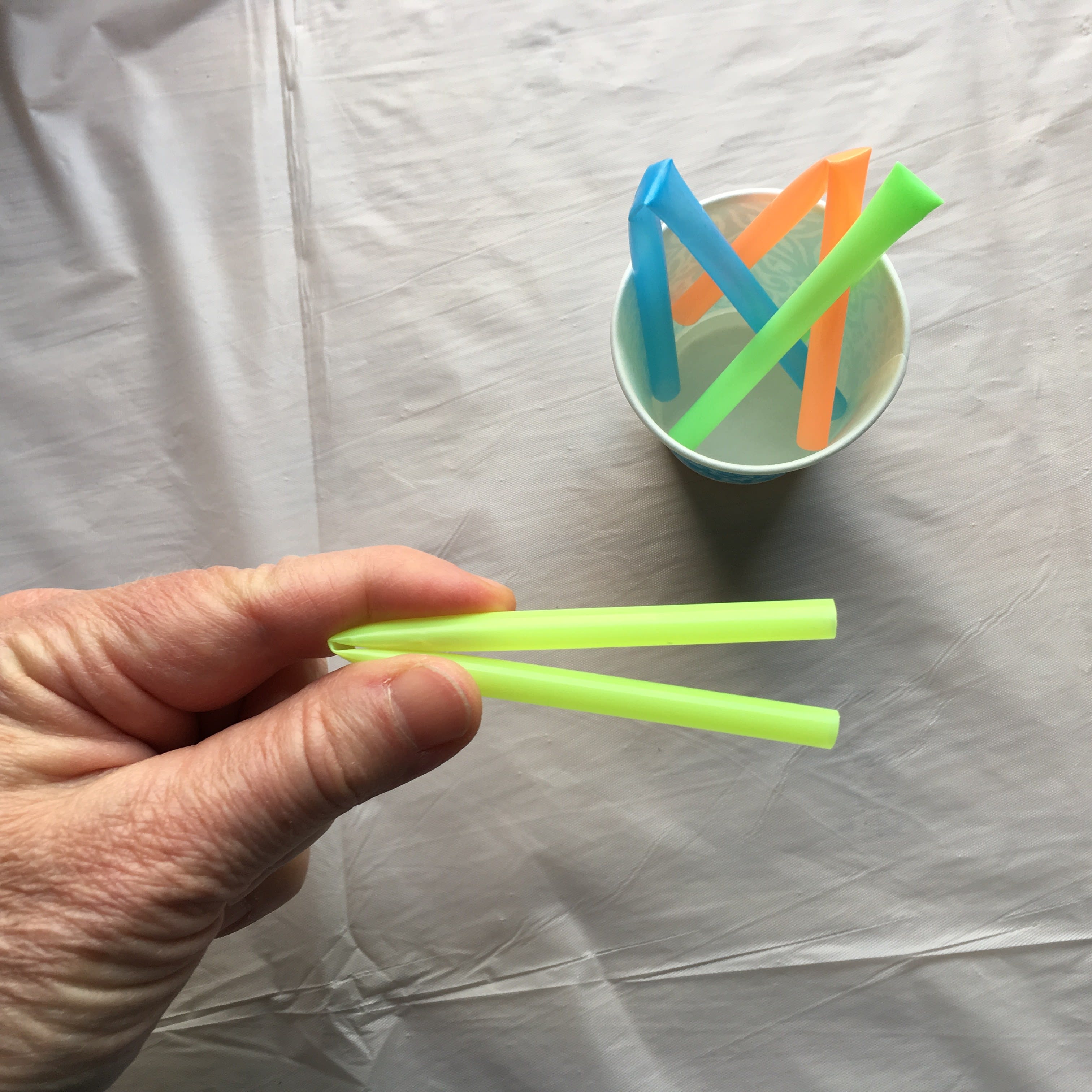
Here’s how to make a “duck beak”:
- You will use half of your Dixie cups to make “duck beaks.” Leave the other half of your Dixie cups whole as they will serve as “stomach cups” for students.
- For half the Dixie cups, use scissors to make a cut from the lip to the base of the cup.
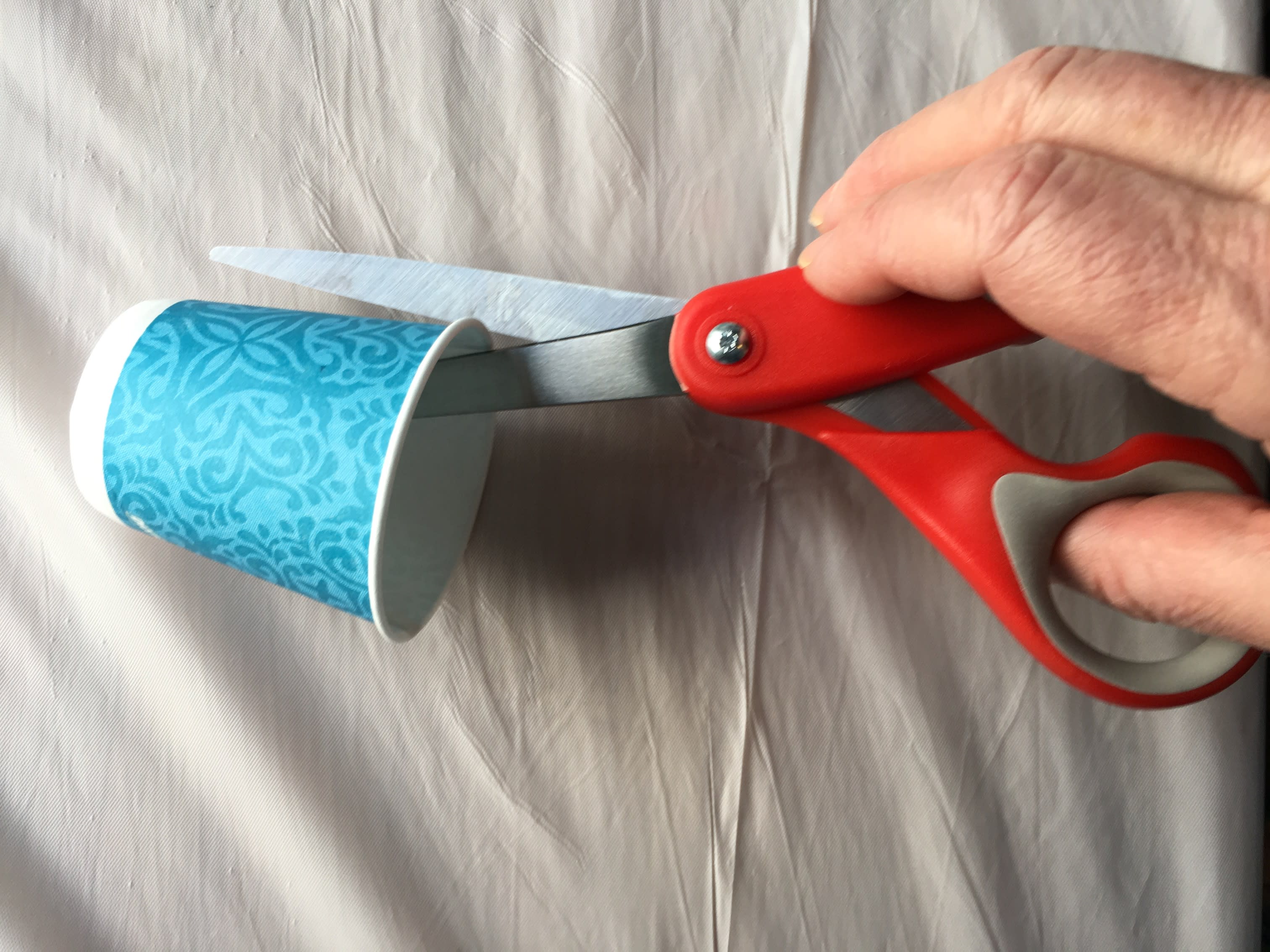
- Make a matching cut on the other side of the cup.
- Squeeze the sides together to make a beak. (Quacking is optional.)
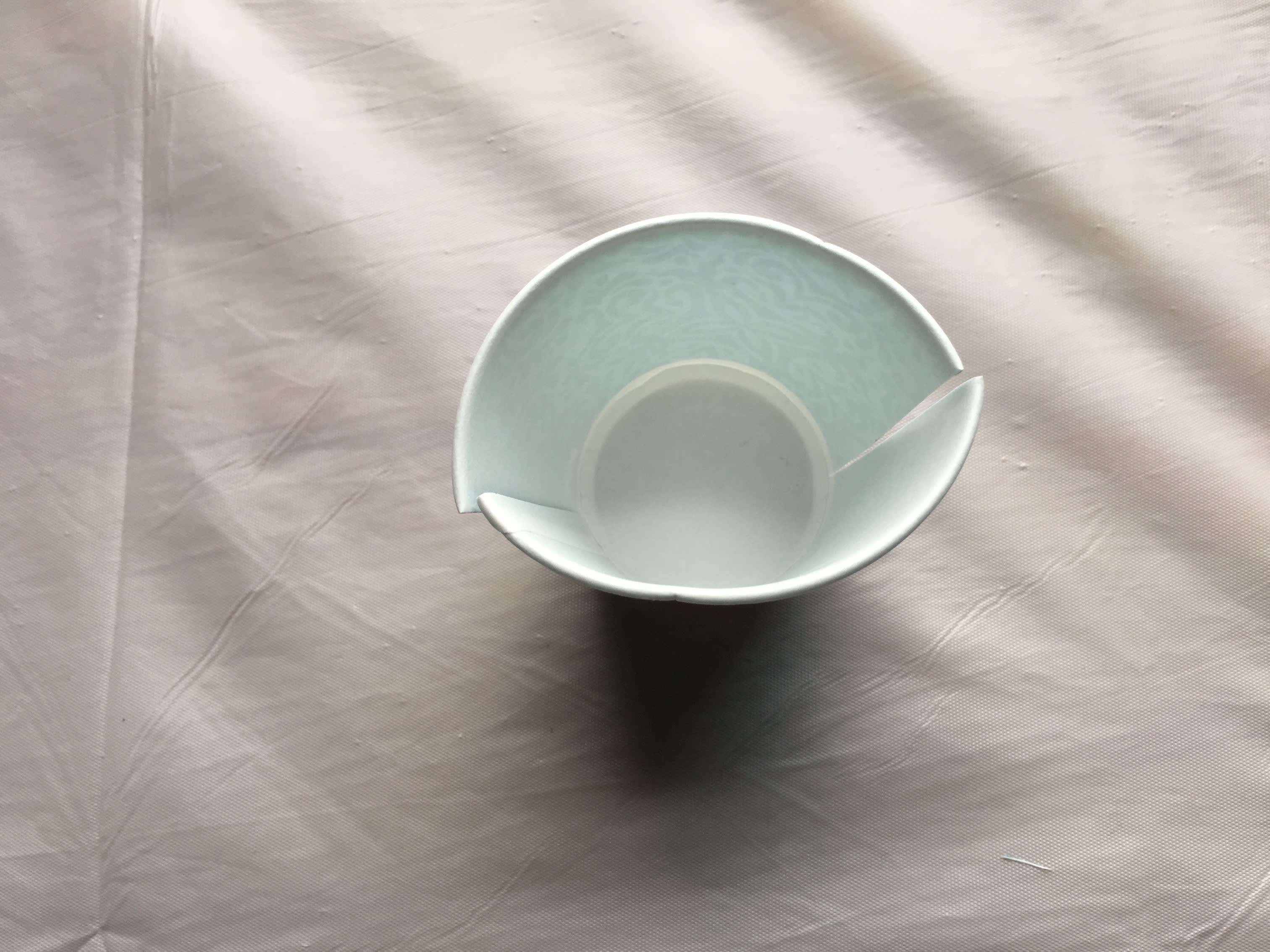
Set Up Stations
Mark off a test area for each group of four students.
- If you have a low-pile carpet, mark a 3’ x 3’ square with masking tape.
- If you have hard floors, spread out a bath towel and tape down the corners.
Prepare “Bird Food” and “Rocks”
For each group, you’ll need to prepare two cups. One filled with model “bird food” and the other filled with model “rocks.”
- Divide the 8 oz paper cups in half.
- For half of the cups, fill each about one-third full with dried macaroni “bird food.”
- For the other half of the cups, fill each about one-third full with dried beans “rocks.”
Separate Supplies for Easy Distribution
At the start of the activity, each student needs a worksheet, “pointy beak,” “duck beak,” and “stomach cup.” Each group also needs a cup of “bird food.”
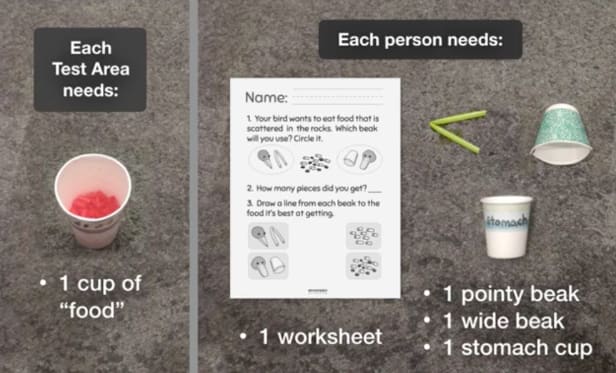
Each group will need a cup of “rocks” later in the activity. You may want to organize or separate supplies for easier classroom distribution.

















